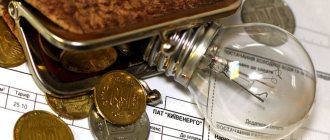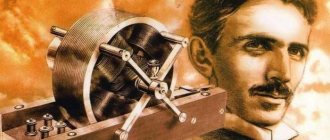Huge energy bills are a problem for many vacation home owners. The desire to cut costs often forces us to sharply limit the use of many appliances or switch from electric to other types of heating. However, in some cases, you can do without this - it’s enough just to wisely manage the energy spent.
Many people think that leaving the lights on in rooms when no one is in them, as well as charging many devices in sockets at the same time, or leaving household appliances in standby mode, will not affect their electricity bills. It's a delusion.
Every minute of operation of any electrical appliance is another watt of power, which very quickly turns into kilowatts, which, in turn, leads to the unnecessary accumulation of additional, completely unnecessary expenses. According to the analyses, the average Russian family consumes approximately 250 kWh of energy per month. At the current cost of electricity in the Moscow region (from 5 rubles per 1 kW), this is equivalent to 1,250 rubles per month or 15,000 rubles per year. So even small energy savings can contribute to significant reductions in family expenses throughout the year.
So if your energy bills are too high, it's worth making a list of the devices you use, their wattage and the approximate amount of time they run per day. All this will allow you to calculate the number of kilowatt-hours (kWh) consumed in one day (multiply the indicated power of the devices during their operation).
In this way, we will know what our electricity consumption looks like and what solutions we need to look for that can reduce it. Fortunately, there are quite a few of them, and they do not require any expense or inconvenience from us.
Selecting energy-saving equipment
As calculations show, most of the electrical energy is absorbed by such devices as:
- fridge;
- electric stove;
- Microwave oven;
- washing machine;
- and other household appliances.
Together they consume almost 60% of electricity. Therefore, this is a sufficient reason to purchase household appliances, taking into account energy information.
However, first let's see how long the device will be used. Devices with relatively low power consumption that nevertheless remain on for many hours will use much more electricity than large devices that are turned on once a day or less. Taking this into account, it is necessary to analyze the so-called energy passport, which most manufacturers of household appliances today attach to the instructions.
The following information can be analyzed inside the passport:
- Device settings . Most of all, of course, we should be interested in electricity consumption, which is given in kilowatt-hours (kWh) - thanks to this, we can very easily compare specific models of a washing machine, refrigerator or TV;
- Energy class is a rating of devices in gradation from A to D with a plus or minus. The best energy class is A++, which means the equipment consumes less energy than competitors. There are 7 levels of this type, so the fewer pluses and the further away the letter of the alphabet, the more energy-intensive the device. Therefore, we must choose the best energy class - however, remember to compare them only within a given device model and similar operating parameters. A 55-inch TV with energy class A+ consumes more energy than a 21-inch TV with class B.
Filters and switches
If phone chargers are not unplugged from the network, electricity consumption will be high. Standby mode consumes a lot of resources, but not all users know about it. On the other hand, it is unsafe to turn off the wire all the time: this may cause the device to break down. Buy a socket with a switch and turn off several operating devices with one press of a button.
Sockets with switches save electricity, and surge protectors protect your gadgets from power surges. If the device is protected from power surges and consumes less electricity, this will extend its service life. The savings after purchasing filters and switches will be significant.
Setting standby mode on devices
This is one of the biggest and, at the same time, least noticeable problems associated with energy waste. Standby mode (most often found in electronic devices) allows us to turn on the TV, game consoles and other equipment once with a single button. This is a very convenient solution, which in many situations can require a significant amount of energy.
Why? A device's standby mode is usually indicated by a glowing diode (usually red or blue), indicating that it is constantly consuming power. If you compare their electricity consumption during the day, these are very small values, but over the course of a year, 3-4 devices left in standby mode can cost you about 1,000 rubles in additional electricity costs.
The solution to this problem is very simple - just turn off the device with the main button, which turns off access to electricity. This should be done first before bed - these few hours can lead to significant savings.
Why save energy?
If saving money on electricity bills is not a strong incentive for you, then look at the problem differently. Electricity is produced by thermal power plants, which daily emit many harmful substances into the atmosphere by burning natural fuels: coal, oil and gas. Environmental pollution leads to global warming and, as a result, natural disasters. Efficient use of electricity will help preserve nature. If every person consciously addresses environmental issues, we can save the planet for our children. We bring to your attention the best ways to effectively save energy at home.
On timers
Another useful device that will allow you to turn off various equipment at night or when we are outside the house. The operation and essence of the timer is very simple - it can turn off or turn on a selected electrical appliance at a predetermined time. Thanks to this solution we can reduce unnecessary energy consumption in our home.
There are various types of these devices available on the market today. You can find and buy the simplest models, the cost of which is only 100-150 rubles, or slightly more complex devices, characterized by greater accuracy and the presence of many programs. It is worth considering purchasing a time programmer for the boiler, lighting, electronics and household appliances - these are the devices that consume the most energy.
Installation of a multi-tariff meter
This is a great opportunity to save energy. In many regions of Russia there is a multi-tariff electricity metering system. In this case, 24 hours are divided into certain periods of time - day and night. The cost of electricity in these periods of time is calculated at different tariffs. At the same time, the price per 1 kW/h at night can be 3 times lower than during the day.
Energy saving light bulbs
In recent years, traditional incandescent lamps are increasingly being replaced by more modern energy-saving ones. This is due to the fact that they consume a large amount of energy, which is only slightly converted into light. According to scientists, only 5% of the electricity consumed by an incandescent lamp turns into light - the rest simply goes to electricity bills.
This is why energy efficient light bulbs seem to be so much more efficient. They require much less energy, so they will work especially in areas where light is used the most (including the living room or workshop). Although, they should not be installed everywhere, for example in the bathroom, where they will only run for a moment. Why? Energy-saving lamps require a lot of power to operate - these losses are compensated only in case of longer operation. All this means that in rooms such as the bathroom, an energy-saving lamp will not be an effective solution.
Saving water
- Install water flow meters. This will motivate you to reduce water consumption.
- Install lever switches on faucets instead of rotary faucets. Water savings of 10-15% plus ease of temperature selection.
- Do not turn on the water at full blast. In 90% of cases, a small jet is sufficient. Savings 4-5 times.
- When washing and showering, turn off the water when it is not needed.
- Taking a shower uses 10-20 times less water than taking a bath.
- Significant water savings will be achieved by using two-button flush tanks.
- It is necessary to carefully check for water leakage from the cistern, which occurs due to old fittings in the cistern. Replacing fittings is a cheap task, but the water savings are impressive. Through a trickle of leakage, you can lose several cubic meters of water per month.
- Check how the return flow to the hot water supply works. If there is no circulation during supply, then you will be forced to pump water through your neighbors' risers until you get it hot in your apartment. Of course, in this case, expensive “hot” water is simply drained into the sewer.
Site visitor additionally recommends: (thank you!)
Savings in the bathroom
- Don't leave the tap running all the time while brushing your teeth. Try to turn it on at the beginning and end of the procedure. You might even buy some mouthwash. This will allow you to use the money you save to protect the health of your teeth. Savings: 15 liters of water per minute (757 liters per week) with 4 family members.
- Turn off the tap while shaving. A small bowl will help you rinse your razor and save you money. Savings per person: 380 liters per week.
- Reduce your shower time to 5-7 minutes. Savings per person: from 20 liters of water with each shower.
- When taking a shower, it is not necessary to leave the water flow at maximum all the time. Use maximum pressure when rinsing and rinsing off foam. Savings per person: up to 20 liters of water with each shower.
- Fill the bath 50 - 60%. Savings per person: up to 20 liters of water with each bath.
Savings in the kitchen:
- When washing dishes by hand, fill one of the sinks (or another container) with water mixed with detergent. Then rinse the dishes treated with detergent in another sink under low pressure of warm water. Savings per person: up to 60 liters of water per day.
- Use the dishwasher with a full load whenever possible. Savings per person: up to 60 liters of water per use.
- Wash fruits and vegetables in a sink filled with water with the tap turned off. Savings per person: up to 10 liters of water per day.
- Do not use water to defrost meat products. You can defrost them by leaving them in the refrigerator overnight. Savings per person: up to 10 liters of water per day.
In general, reducing water consumption by 4 times is a completely feasible and low-cost task.
LED bulbs
LED lighting is an order of magnitude superior to traditional light bulbs (they consume 90% less energy) and even energy-saving lamps. True, they are expensive, but the one-time purchase is more than offset by lower electricity bills.
LED lamps are suitable for any room - they can be installed in the living room, bedroom, bathroom and kitchen. It is worth choosing LED strips that can be easily adapted to your needs.
When choosing light bulbs with lower energy consumption, let's not forget about their power. It is important that they are not too weak, because the light they generate will be insufficient, which will not only lead to poor lighting, but can also affect our well-being. Therefore, LED lamps are supposed to be slightly stronger than traditional ones.
Solar lamps
In rural properties, solar lamps are used as an external fixture - usually in gardens and at the front of the house.
Their biggest advantage is that they do not consume electricity at all. The operation of this type of equipment is based on special photovoltaic cells that receive electricity from solar radiation. Moreover, these types of lamps do not have any cables, you just need to install them in your chosen location or stick them to the ground.
Without stopping at lighting, it is worth mentioning the possibilities offered by motion sensors. They can be used both indoors and outdoors. Having discovered our presence, they immediately turn on the lights. However, when we leave the room, after a while the light turns off. Thanks to this, we don't have to worry about leaving the lights on in the kitchen or living room by mistake.
However, you should only buy high-quality sensors that are very accurate. Cheaper models may have trouble detecting our presence or turning off the lights too quickly when we leave the room. This will lead to a situation where every exit to the bathroom will cause the lamps to be reconnected, which will increase energy consumption.
Presence and motion sensors
Presence and motion sensors are installed everywhere: in a country house, in an apartment, on a staircase, in large private areas. With their help, you can significantly save costs by minimizing the operating time of electric light sources. Install sensors in places where people are not constantly present:
- in the entrances;
- in hallways;
- in the corridors;
- in toilets;
- in storage rooms.
When a person appears in the operating area of the sensors, they are automatically triggered, turning the light bulbs on or off. The height of a person falling into their tracking zone must be at least a meter. The sensors do not respond to the appearance of a pet.
Infrared devices “catch” infrared radiation emanating from people. After this, a signal is sent to the switch, closing its electrical circuit. When the IR radiation disappears from the tracking area, the device opens the circuit and the light turns off again.
Sensors that generate microwave radiation are tuned to microwaves emanating from the human body. The principle of their operation is the same as that of infrared devices. Ultrasonic and combination devices work in a similar way.
Sensors save people from having to search for a switch in a dark room. They save electricity, increasing the life of lighting devices.
Adjusting the Thermostat
A poorly calibrated thermostat can cause rooms in your home to overheat. How do we usually deal with stuffiness? That's right - we open the windows, and electricity is wasted. The best solution is to adjust the thermostat to suit our needs.
Each thermostat step increases your electricity consumption by about 3-5%, so the savings can be huge. Unnecessary energy consumption can also increase the water heater, especially models that constantly maintain the selected temperature (storage heaters). It is worth choosing energy-saving products, that is, those that heat the water only during its use (instantaneous heater).
Don't waste your heat
- Instead of using a traditional heater, use an air conditioner set to heating mode. If the manufacturer allows it, of course. Many air conditioners cannot be used at subzero temperatures.
- An infrared heater is 30–80% more economical than others.
- If your home has electric radiators, try to keep them clean so that dust does not absorb some of the heat and you do not have to increase the temperature.
- When using a water heater, reduce the water heating temperature.
- Replace the storage water heater with a flow-through one. This way you won’t waste electricity constantly maintaining a certain water temperature.
- Heat water only when necessary. Unplug the boiler when you leave home and at night.
- Once every three months, clean the water heater from scale, which increases energy consumption by 15–20%.
- Disconnect the device from the network and turn off the water supply.
- Drain completely.
- Remove the boiler cover, carefully disconnect the wires and unscrew the thermostat.
- Unscrew the nuts holding the flange. Push the flange up, rotate it and pull it out.
- Now you can clean the heating element with a wire brush. A solution of acetic acid and hot water (1:5) will also help get rid of plaque. Just place the heating element in it for 30 minutes and make sure that the sealing rubber does not come into contact with the acid.
Useful tips
Saving energy in your own home is primarily associated with the development of certain habits, thanks to which situations with excessive energy consumption will not arise. What are we talking about?
- Make the most of daylight. Turning on room lights too early is a common problem in many homes. In this case, even if comfort increases, it is only slightly, but electricity consumption increases significantly. To avoid this, it is worth moving a chair, sofa or table closer to the window, thanks to which we can use daylight for much longer;
- Do not put warm dishes in the refrigerator - it will take a lot of energy to cool them;
- Only run the dishwasher when it is completely filled with dirty dishes;
- Try not to leave equipment and lights when you are not using them;
- Use the "Energy Saving" mode in electronic devices;
- Check the tightness of the walls and roof of the house;
- Do not leave the refrigerator open;
- When you brush your teeth and shave, don't leave the water running;
- Take advantage of cheaper tariffs and modern electricity meters.
Did you find this article helpful? Please share it on social networks: Don't forget to bookmark the Nedvio website. We talk about construction, renovation, and country real estate in an interesting, useful and understandable way.
How to save energy when operating a boiler, computer and air conditioner
When operating appliances such as a boiler, computer, or air conditioner, you can also follow recommendations for saving energy:
- installing a shower instead of a bath when using an electric boiler to heat water;
- purchasing a device with a timer that controls the water heating process;
- use of devices with energy-saving mode (computer, air conditioner, boiler in energy-saving mode);
- operation of computers that do not have high power (video card, powerful processor, video editing). Energy-saving appliances consume less electricity;
- The air conditioner should only be operated indoors;
- Modern models of air conditioners are presented with the characteristics of energy saving and self-shutdown when they are set on a timer, so it is best to install them in order to save energy.
By the way, there is an excellent selection of climate control equipment in this store millimetr.ru. There you will find a huge assortment of products from leading manufacturers in the field of climate control equipment!











